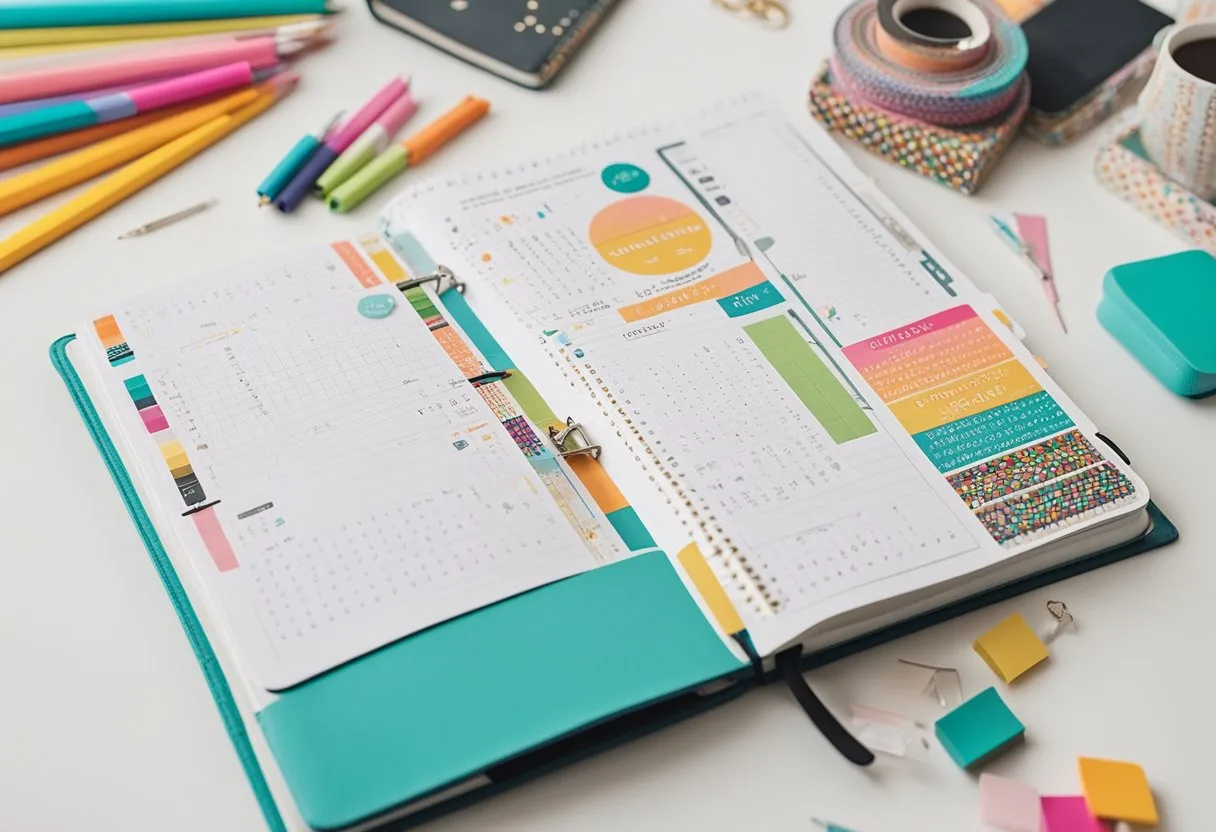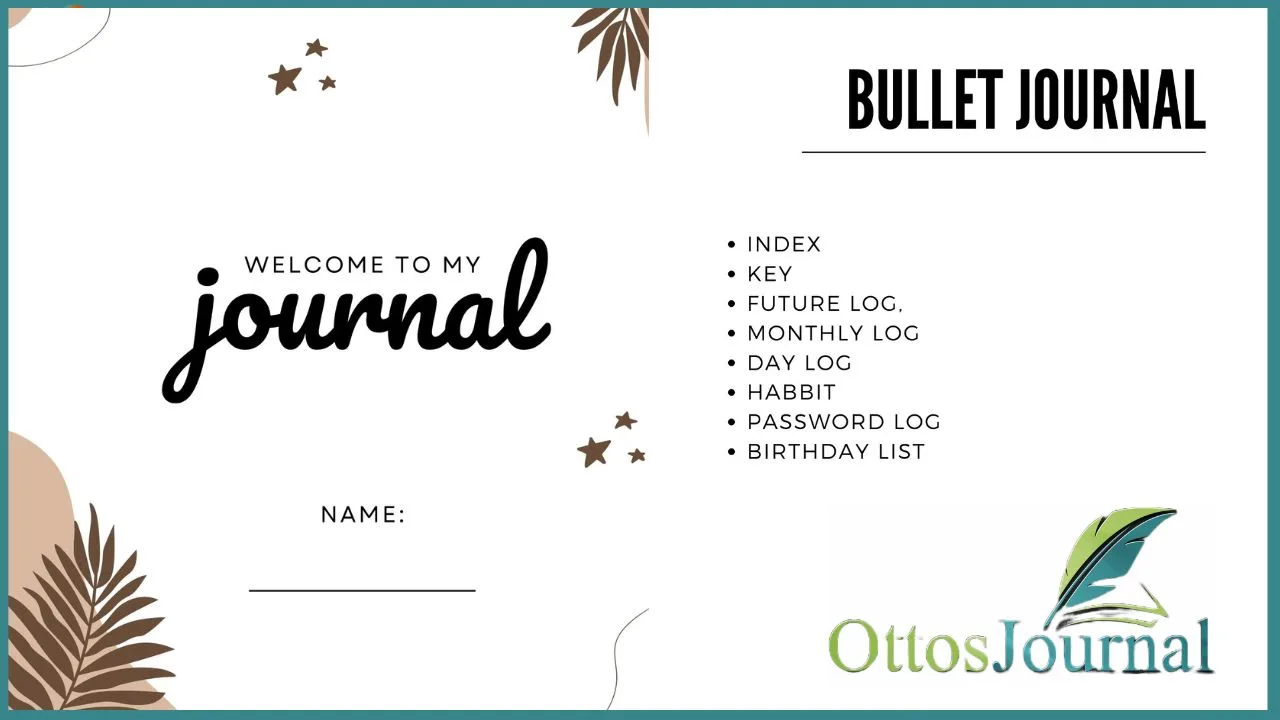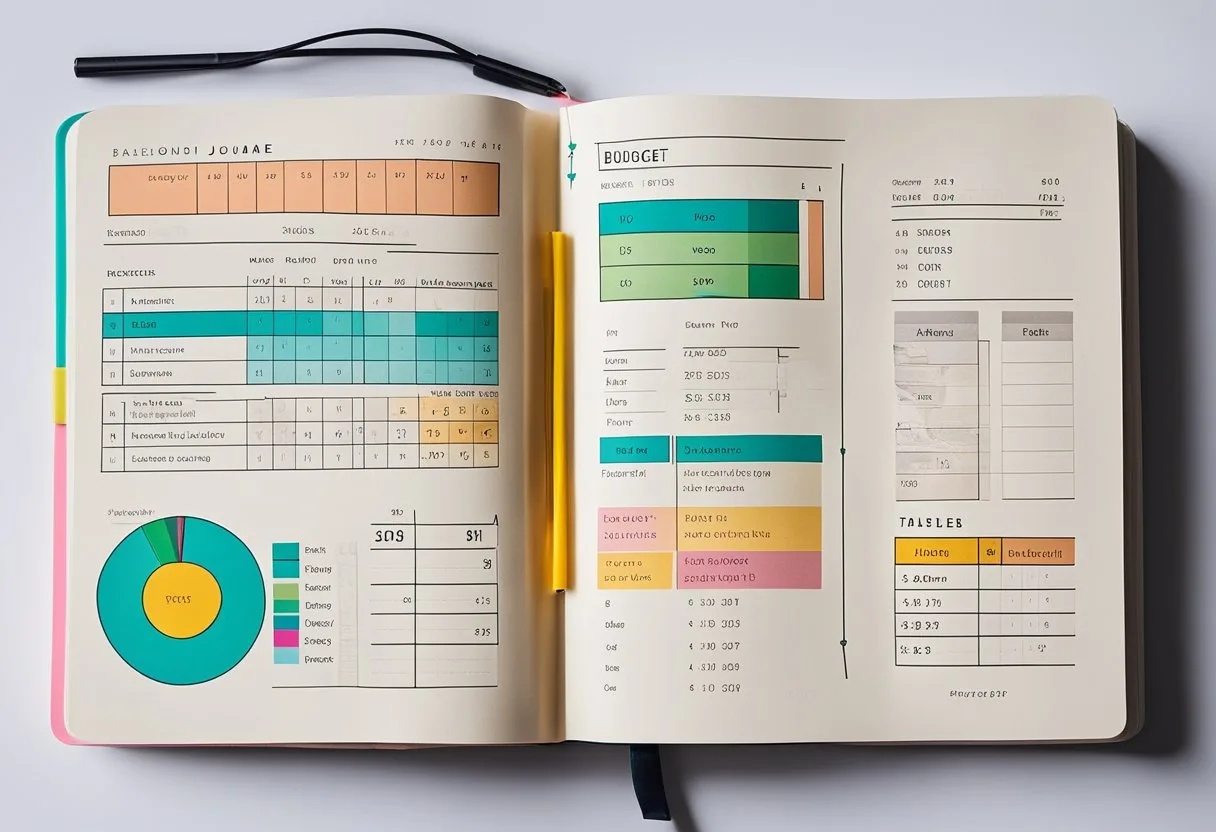Bullet journaling, also known as bujo, is a popular method of organization and creativity that has taken the world by storm. It provides a customizable and efficient way to track daily tasks, set goals, and reflect on personal growth. The beauty of bullet journaling is that it allows individuals to tailor their journal to their specific needs and preferences. In this blog post, I will share with you 25 bujo jourrnal ideas to help you get started.
For those who are new to bullet journaling, it can be overwhelming to know where to start. Fortunately, there are endless bujo ideas available to inspire creativity and organization. From weekly spreads to habit trackers, mood logs to gratitude lists, the possibilities are endless. By incorporating bujo ideas into their daily routine, individuals can increase productivity, reduce stress, and improve overall well-being.
Whether you are a seasoned bullet journaler or just starting out, there are always new and exciting ideas to try. With a little creativity and inspiration, anyone can create a personalized bujo that helps them achieve their goals and live their best life.
Getting Started with Bullet Journaling
Bullet journaling, also known as bujo, is a flexible and customizable system that can be used to organize tasks, goals, and notes. It is a great way to stay organized and productive, and it is also a creative outlet for many people. In this section, we will go over some tips and tricks for starting a bullet journal.
Choosing Your Bujo Tools
One of the great things about bullet journaling is that you can use any notebook and pen that you like. However, some people prefer to use specific supplies that are designed for bullet journaling. These supplies can include dot grid notebooks, fine-tipped pens, and highlighters. It is important to choose tools that you feel comfortable using and that will help you achieve your bullet journaling goals.
Understanding the Bullet Journal Method
The bullet journal method was created by Ryder Carroll and it consists of four main components: the index, the future log, the monthly log, and the daily log. The index is a table of contents that helps you find specific pages in your bullet journal.
The future log is where you can write down events and tasks that will happen in the future. The monthly log is where you can plan out your month, and the daily log is where you can write down your daily tasks and notes.
Setting Up Your First Pages
When setting up your first pages, it is important to start with a bullet journal key. This key will help you keep track of your tasks and notes. You can use symbols such as a dot for tasks, a circle for events, and a dash for notes.
It is also important to create a bullet journal index, which will help you find specific pages in your bullet journal. After creating your key and index, you can start setting up your monthly and daily logs.
Starting a bullet journal is a great way to stay organized and productive. By choosing the right tools, understanding the bullet journal method, and setting up your first pages, you can create a bullet journal that works for you.
Structuring Your Bujo
When it comes to structuring your Bujo journal, there are a few key elements to consider. These include the index and future log, monthly, weekly, and daily spreads, and bullet journal collections.
Index and Future Log
The index and future log are two of the most important parts of your Bujo journal. The index serves as a table of contents, allowing you to easily find specific pages within your journal. The future log, on the other hand, is a place to record future events and tasks that are not yet scheduled.
To create an index, simply designate a few pages at the beginning of your journal and number them. As you add new pages, add them to your index with a brief description of the content. For the future log, create a two-page spread with each page representing six months. Use this space to record important dates and events that are coming up in the future.
Monthly, Weekly, and Daily Spreads
Monthly, weekly, and daily spreads are the backbone of your Bujo journal. These spreads allow you to plan out your days, weeks, and months in advance, helping you stay organized and on track.
To create a monthly spread, start by designating a two-page spread for each month. Use one page to create a calendar view of the month, and the other to record important events, tasks, and goals for the month.
For weekly spreads, use a two-page spread for each week, and record your appointments, tasks, and goals for each day of the week. Daily spreads are created for each day, and can be as detailed or as simple as you like.
Bullet Journal Collections
Bullet journal collections are a great way to organize specific types of information within your journal. These collections can be used for things like habit tracking, book lists, and goal setting.
To create a bullet journal collection, simply designate a few pages for the collection and give it a title. Use bullet points or other symbols to record information within the collection. For example, if you are creating a habit tracking collection, you might create a table with each row representing a day of the month and each column representing a habit you are trying to track.
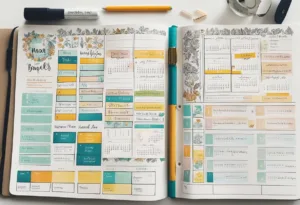
Creative and Functional Bujo Ideas
Bullet journaling is a creative and functional way to keep track of your daily tasks, goals, and habits. Here are 25 creative and functional bujo ideas that can help you stay organized and motivated:
Habit Tracker
To begin a habit tracker, list your desired habits in a column on the left side of a two-page spread. Across the top, write dates or days of the week. Each day, mark whether you completed each habit. This visual accountability can help reinforce good habits.
Mood Tracker
Start a mood tracker by drawing a grid with days of the month and assign colors or symbols to different moods. Each day, fill in the corresponding square with the color that matches your mood. Over time, you’ll see patterns in your emotional well-being.
Sleep Tracker
Create a sleep tracker with a graph or chart to log your sleep and wake times. Include a section for notes on sleep quality. This can help you understand your sleep patterns and make adjustments for better rest.
Health Tracker
For a health tracker, create sections to record various health metrics like weight, blood pressure, or daily steps. Regular monitoring can alert you to changes and encourage a healthier lifestyle.
Weight Loss Tracker
Design a weight loss tracker with a starting point, goal, and milestones. Use a chart or graph to plot your progress and celebrate achievements along the way.
Gratitude Log
Set up a daily gratitude log with space to write down things you’re thankful for. This practice can improve mood and perspective by focusing on positive aspects of life.
Collections
Collections can be lists or galleries of interests or goals, like books to read or travel destinations. Dedicate a page to each collection and update it as you make progress or gain new interests.
Lists
For daily to-do lists, grocery lists, or packing lists, create simple, categorized checklists. This can help you stay organized and ensure you don’t overlook important tasks or items.
Bucket List
Write down your dreams and aspirations in a bucket list. Include short-term and long-term goals, and check them off as you accomplish each one.
Wish List
Keep a wish list for items or experiences you desire. This can serve as a reminder for yourself or as gift ideas for friends and family.
Shopping List
Maintain a shopping list to keep track of needed items. Organize it by store or item type for efficient shopping trips.
Meal Planner
Sketch out a weekly meal plan with space for breakfast, lunch, dinner, and snacks. This can help with grocery shopping and ensure you eat a balanced diet.
Books to Read
List books you’re interested in reading. You can categorize by genre or author and check them off as you complete them.
Trackers
Use various trackers for water intake, exercise, and spending. Design each tracker to suit the activity, such as a water droplet for each glass drunk or a graph for spending habits.
Page Ideas
Experiment with page decorations like doodles, washi tape, and stickers to make your bullet journal visually appealing and personalized.
Bullet Journal Page Ideas
Plan your pages with specific purposes, like schedules, goals, or lists. Use headers and dividers to organize the content.
Bullet Journal Ideas
Incorporate different bullet journal ideas like mood boards, vision pages, or year-in-pixels to track long-term trends and goals.
Doodles
Add doodles to your pages to fill empty spaces and add a personal touch. Practice simple shapes and build up to more complex drawings.
Washi Tape
Use washi tape to create borders, highlight sections, or just add a splash of color and pattern to your pages.
Stickers
Incorporate stickers for a fun and easy way to decorate and emphasize certain elements in your bullet journal.
Headers
Create distinct headers for different sections or pages. Use various fonts and styles to make them stand out and add structure to your journal.
Bullet Journal Ideas for Beginners
Start with basic layouts and simple tracking pages. As you get more comfortable, gradually add more detailed and creative pages.
Minimalist Bujo Ideas
Focus on functionality with a clean and uncluttered design. Use monochromatic color schemes and simple line art for a minimalist aesthetic.
Color-Coded Pages
Assign colors to different categories or types of tasks. This visual organization can make your bullet journal more intuitive and easier to use.
Inspiration Pages
Dedicate pages to quotes, affirmations, and goal setting. These can serve as motivation and provide a mental boost when you revisit them.
Themed Bullet Journal Inspiration
Bullet journaling is a versatile and customizable way to keep track of daily tasks, personal goals, and much more. One of the most fun aspects of bullet journaling is the ability to create themed spreads that reflect your interests and aspirations. Whether you’re looking to track your fitness progress, set and achieve personal goals, or simply keep track of your daily schedule, there’s a bullet journal theme for everyone.
Seasonal Themes and Decor
Seasonal themes are a great way to keep your bullet journal fresh and exciting throughout the year. Spring themes might feature floral designs, while fall themes might incorporate warm, earthy colors and images of falling leaves. Gardening and plant themes are also popular, especially during the spring and summer months.
Personal Life and Wellness
Bullet journaling can be a powerful tool for tracking personal goals and wellness progress. Love and relationship themes might include lists of things to do together or memories to cherish. Health and fitness trackers can help you stay on top of your daily exercise routine, while year-in-pixels spreads allow you to track your mood and emotional well-being over time.
Productivity and Goal Tracking
Bullet journals are also great for tracking productivity and setting and achieving personal goals. Time blocking spreads can help you make the most of your day, while goal-setting spreads allow you to break down larger goals into smaller, more manageable tasks. Personal goal spreads might include resolutions for the year ahead or lists of things you’d like to accomplish in the future.
Themed bullet journaling is a fun and creative way to stay organized and motivated. Whether you’re looking to track your fitness progress, set and achieve personal goals, or simply keep track of your daily schedule, there’s a bullet journal theme for everyone.
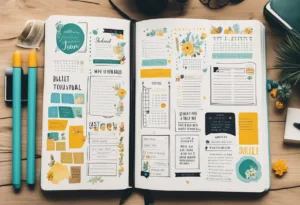
Advanced Bullet Journal Techniques
Bullet journaling is a popular method of organizing daily tasks and thoughts, but it can also be used for more advanced planning and tracking. Here are some innovative techniques to take your bullet journaling to the next level.
Innovative Page Layouts
One of the most significant advantages of bullet journaling is its flexibility. Advanced users can create unique page layouts to fit their specific needs. Some innovative page layouts include brain dump pages, monthly calendars, and future logs. Brain dump pages are a place to jot down all your thoughts and ideas, while monthly calendars and future logs allow for long-term planning.
Integrating Technology and Social Media
Bullet journaling is a paper-based method, but that doesn’t mean it can’t be integrated with technology. Many bullet journal enthusiasts use Instagram to share their layouts and ideas with the community. Some apps can be used to digitize bullet journal pages. Users can take pictures of their pages and upload them to the app, creating a digital backup of their journal.
Long-Term Planning and Review
Bullet journaling is not just a daily planner but can also be used for long-term planning and review. The bullet journal collections, such as a bucket list or level 10 life, are great ways to track long-term goals. Expert bullet journal users suggest creating a monthly review spread to reflect on the previous month’s accomplishments and areas for improvement.
These advanced bullet journal techniques can enhance the process of bullet journaling and make it more effective. By utilizing innovative page layouts, integrating technology and social media, and planning for the long-term, users can take their bullet journaling to the next level.
Frequently Asked Questions
What essential pages should every bullet journal include?
Every bullet journal should have an index or table of contents, a future log, and a monthly log. The index helps you keep track of your pages, while the future log lets you plan for events that are months away. The monthly log helps you track your tasks, events, and notes for the current month.
How can one personalize their bullet journal with stickers and colors?
Stickers and colors can be used to add a personal touch to your bullet journal. You can use stickers to decorate your pages and add color to your layouts. Washi tape, colored pens, and highlighters are also great tools for adding color to your pages.
What are the best bullet journal layout ideas for managing monthly tasks?
For managing monthly tasks, a simple calendar spread or a habit tracker can be effective. A calendar spread allows you to see your month at a glance and plan your tasks accordingly. A habit tracker helps you keep track of your daily habits and ensures that you are making progress towards your goals.
Which supplies are considered must-haves for starting a bullet journal?
The must-have supplies for starting a bullet journal include a notebook, a pen, and a ruler. While other supplies such as colored pens, stickers, and washi tape can be helpful, they are not essential.
What creative ideas can students incorporate into their bullet journals?
Students can incorporate various creative ideas into their bullet journals, such as a study schedule, a grade tracker, and a reading list. They can also use their bullet journal to set goals and track their progress towards achieving them.
How can adults use bullet journals effectively for personal organization?
Adults can use bullet journals to manage their daily tasks, track their habits, set goals, and keep track of their appointments and events. They can also use their bullet journal to reflect on their progress and make adjustments to their routines as needed.

